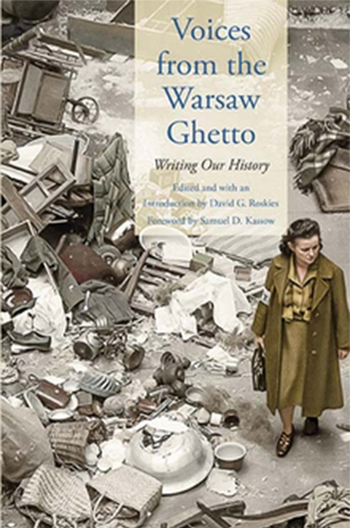 Voices from the Warsaw Ghetto: Writing Our History
Voices from the Warsaw Ghetto: Writing Our History
David G. Roskies, editor
How does one bear witness to a community being destroyed? What Emanuel Ringelblum did in Warsaw in the early 1940s was to create a community of chroniclers. Folks from various walks of life–poets, rabbis, activists, and others–were brought together under the moniker “Oyneg Shabes” (Joy of Sabbath), and urged to write of the “ordinary” lives in the Warsaw ghetto, quite literally as the Nazis were attempting to exterminate Jewish communities across Europe. Life then was hardly “ordinary” but many daily events (horrific as they were) were captured in these essays; the manuscripts were then placed into metal milk cans, which miraculously were preserved until unearthed after the war. Nearly all of the essayists perished in the Shoah (Holocaust). This book provides a window into life in the Warsaw ghetto and includes jokes, drawings, stories, poems, and essays about tailors, children, teachers, smugglers…a general cross-section of society there. What makes this book so gripping is the immediacy of the essays. Ringleblum encouraged the essayists to write in the here and now: what is happening at this very moment. The hope was, and is, that hearing of the plight of Warsaw’s Jewish residents would help us all to prevent future atrocities; a task, I’m afraid, that has not been successful.
MICHAEL SHOLINBECK
Public Health Librarian/Optometry Liaison
Bioscience, Natural Resources, & Public Health Library